Normal Occlusion
The normal occlusion is a scissor bite. This is where the mandibular (lower canines) interdigitate with the maxillary (upper) canine and lateral maxillary (upper) incisor teeth. The maxillary (upper) incisors should be in front (rostral) of the lower incisors.
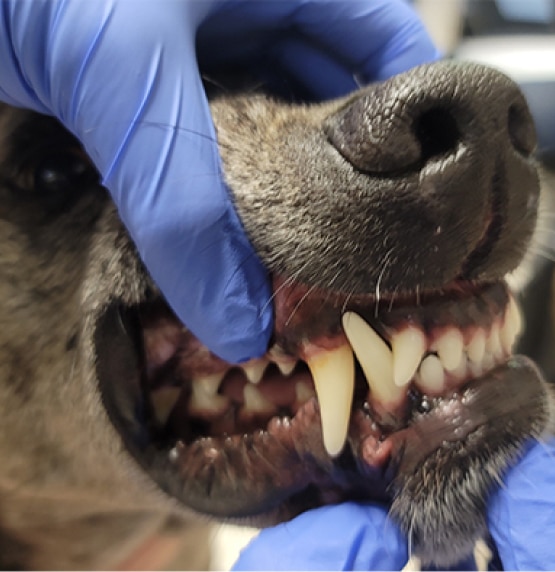
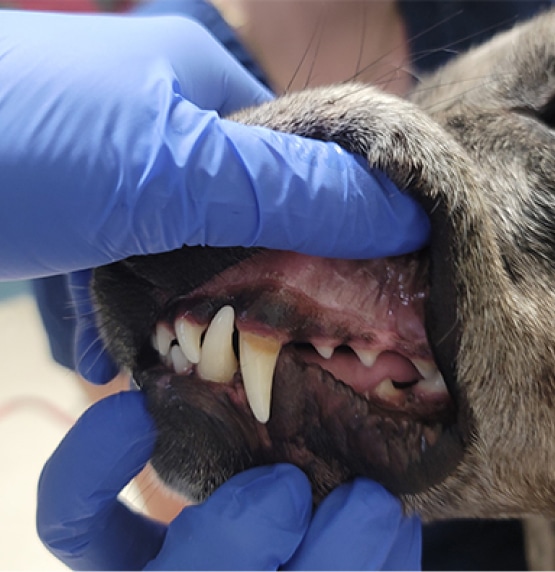
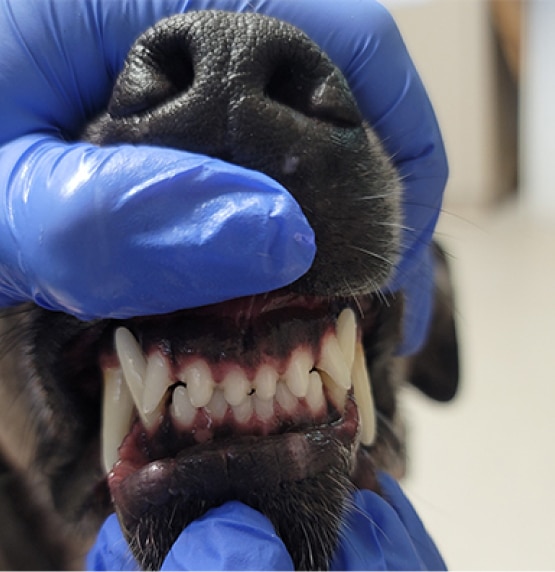
Malocclusion
- A malocclusion is an abnormal alignment of the teeth, also called an abnormal bite. This could be related to malpositioned dentition or skeletal changes which create one jaw to be longer or shorter to the other.
- Malocclusions can be harmless (such as normal breed abnormalities like underbite), or they can be a problem for your pet when there is abnormal tooth-to-tooth or tooth-to-soft tissue contact.
- This tooth-tooth or tooth-soft tissue contact can cause pain and long-lasting side effects that have a negative impact on your pet’s health unless the malocclusion is addressed.
- A malocclusion can involve one or many teeth and can be due to genetic causes, trauma, tumors or infections that cause teeth to erupt abnormally. Baby teeth that fail to fall out can cause malocclusions to develop.
Class 1 Malocclusion
- Example: linguoversion to mandibular (lower) canine (also known as based narrow canine) is where the jaw is normal length but the lower canine is fixed more inward (palatal) and upright and towards the inside of the mouth (lingual).
In puppies, performing extraction of deciduous teeth is imperative to relieve the trauma to allow the lower jaw to continue to grow. This procedure is known as interceptive orthodontics.
In late puppies to adult teeth, other options are ball therapy, crown extensions, gingivectomy with or without crown extensions, incline plane, crown reduction with vital pulp therapy, or extractions of mandibular (lower) canines.
- Example: mesioversion to maxillary (upper) canine (also known as lanced canine) where the tooth is located in the (mesial) direction more forward.
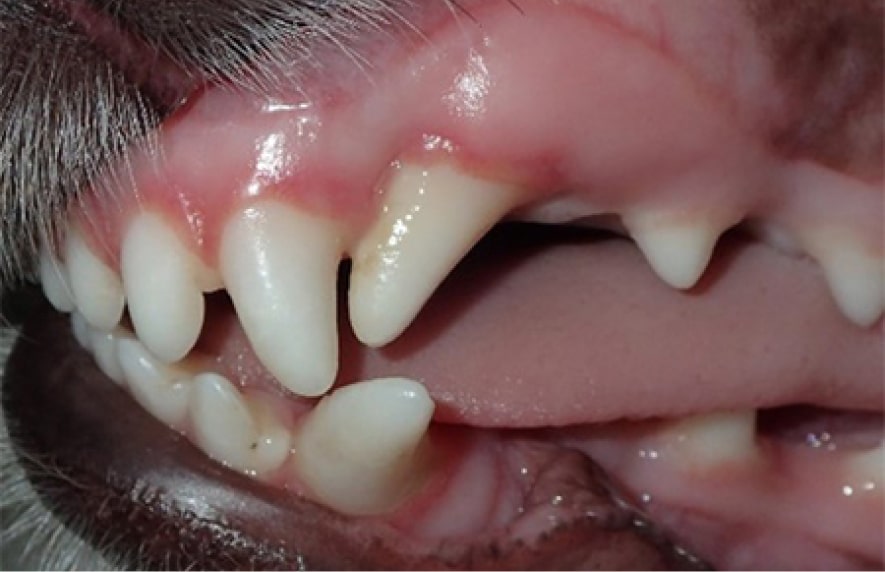
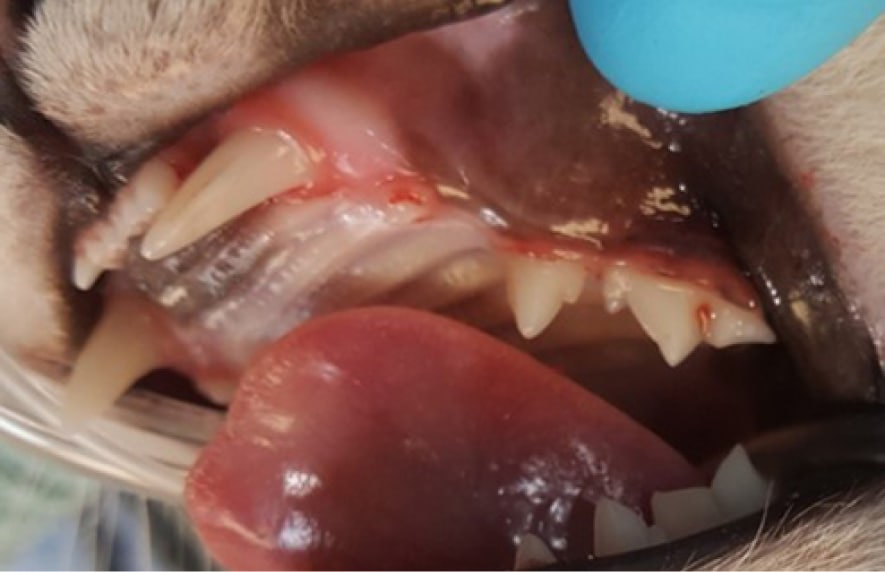
Class 2 Malocclusion
This is a genetic skeletal deformity. The short jaw can cause the mandibular canine teeth or incisors to traumatize the palate and gum tissue of the upper jaw which can lead to damage and pain.
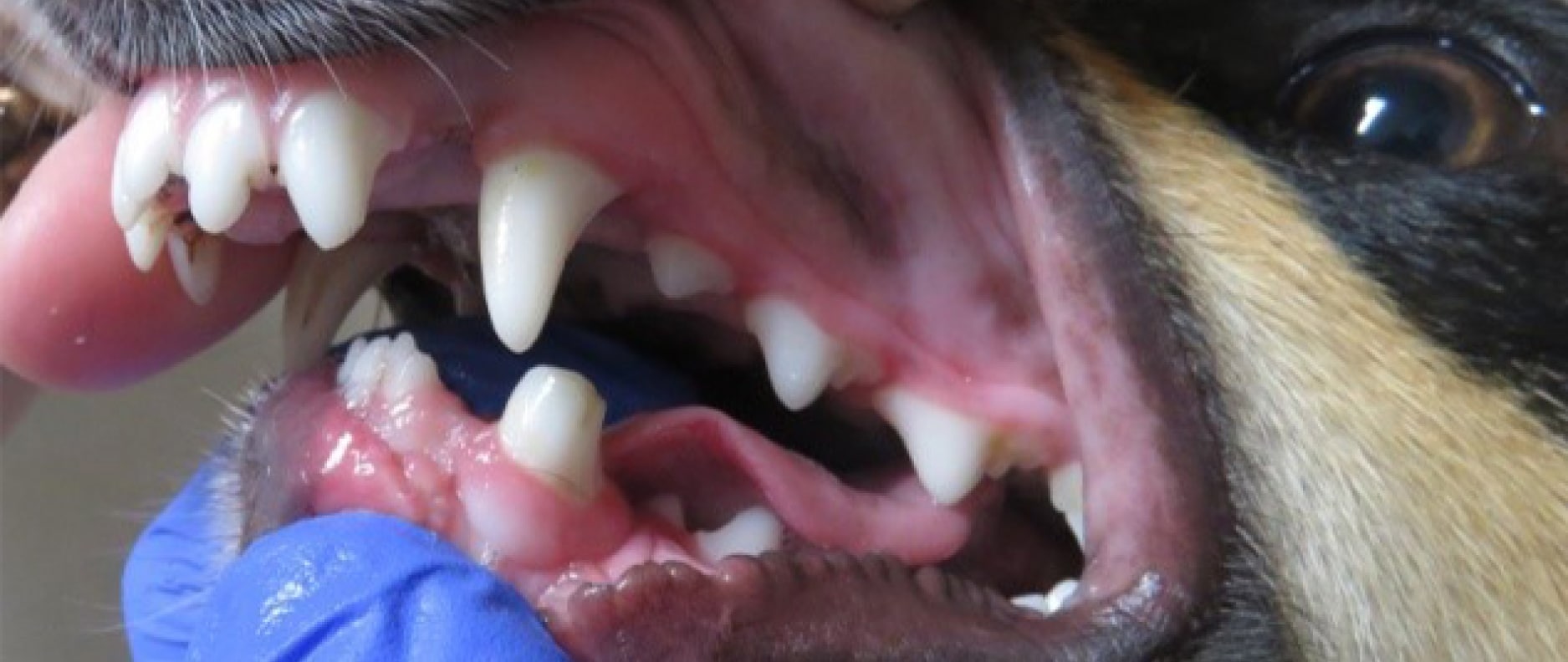
Class 3 Malocclusion
This genetic skeletal condition may be normal for some breeds such as French bulldogs, boxers; however, it can cause abnormal contact to maxillary (upper incisors) making abnormal contact and cause damage to teeth and gums. The short maxilla (upper jaw) can also result in crowding and rotated teeth which can cause abnormal wear leading to a rapid onset of periodontal disease.
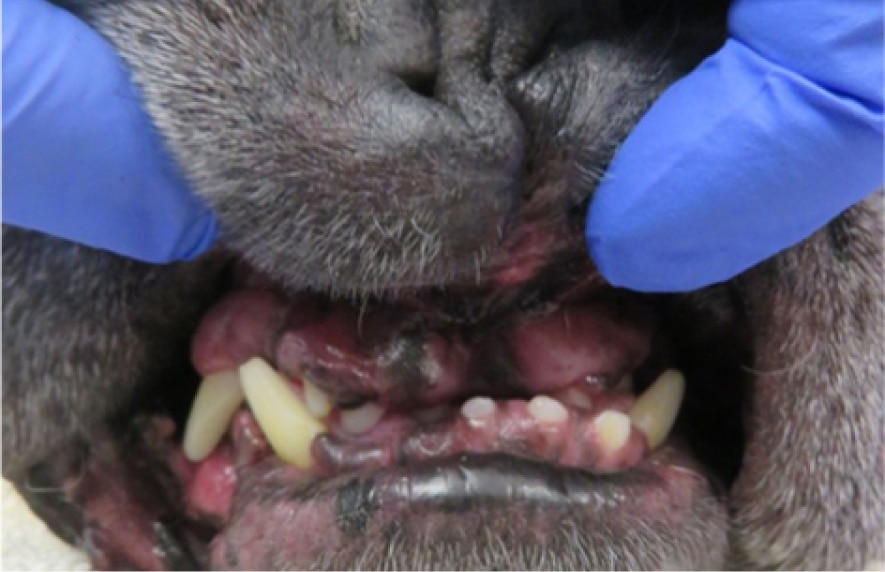
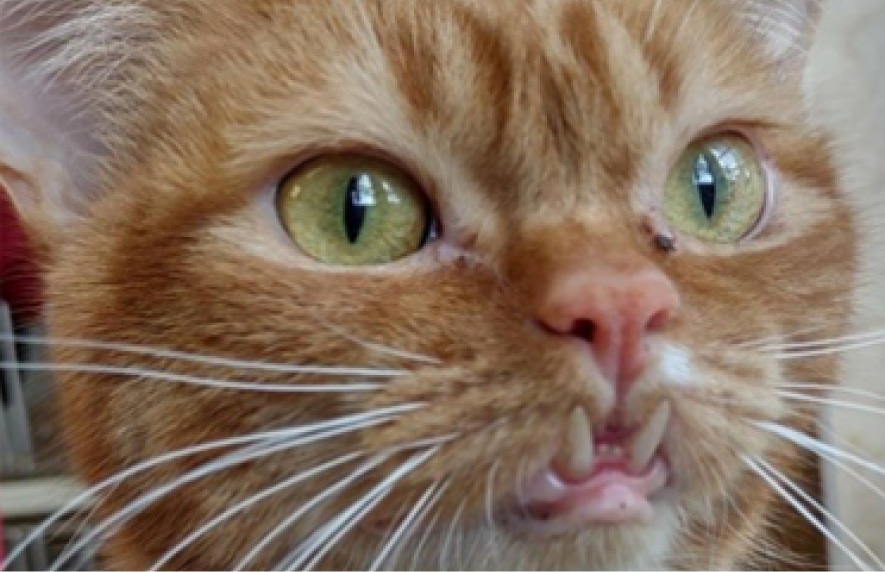
Class 4 Malocclusion
This leads to left-to-right asymmetry of the jaws, meaning that they may have an “open bite” where their teeth cannot fit together normally and the upper jaw may look as though it is to one side or the other of the bottom jaw. This usually is caused by trauma when the jaws are growing and leads to different growth rates to each jaw part.
Management of Malocclusion:
Orthodontics
This is a specialty in dentistry and oral surgery concerned with prevention and correction of malocclusion to alleviate trauma to the mouth. Mouths of animals do not have to be aesthetically pleasing however they should be free of discomfort.
Preventative Orthodontics:
This is a preventative procedure which is undertaken in anticipation of a developmental problem.
Interceptive Orthodontics
Removal of a tooth to reduce trauma to permanent dentition or to allow for a normal path for an adult tooth to erupt normally.
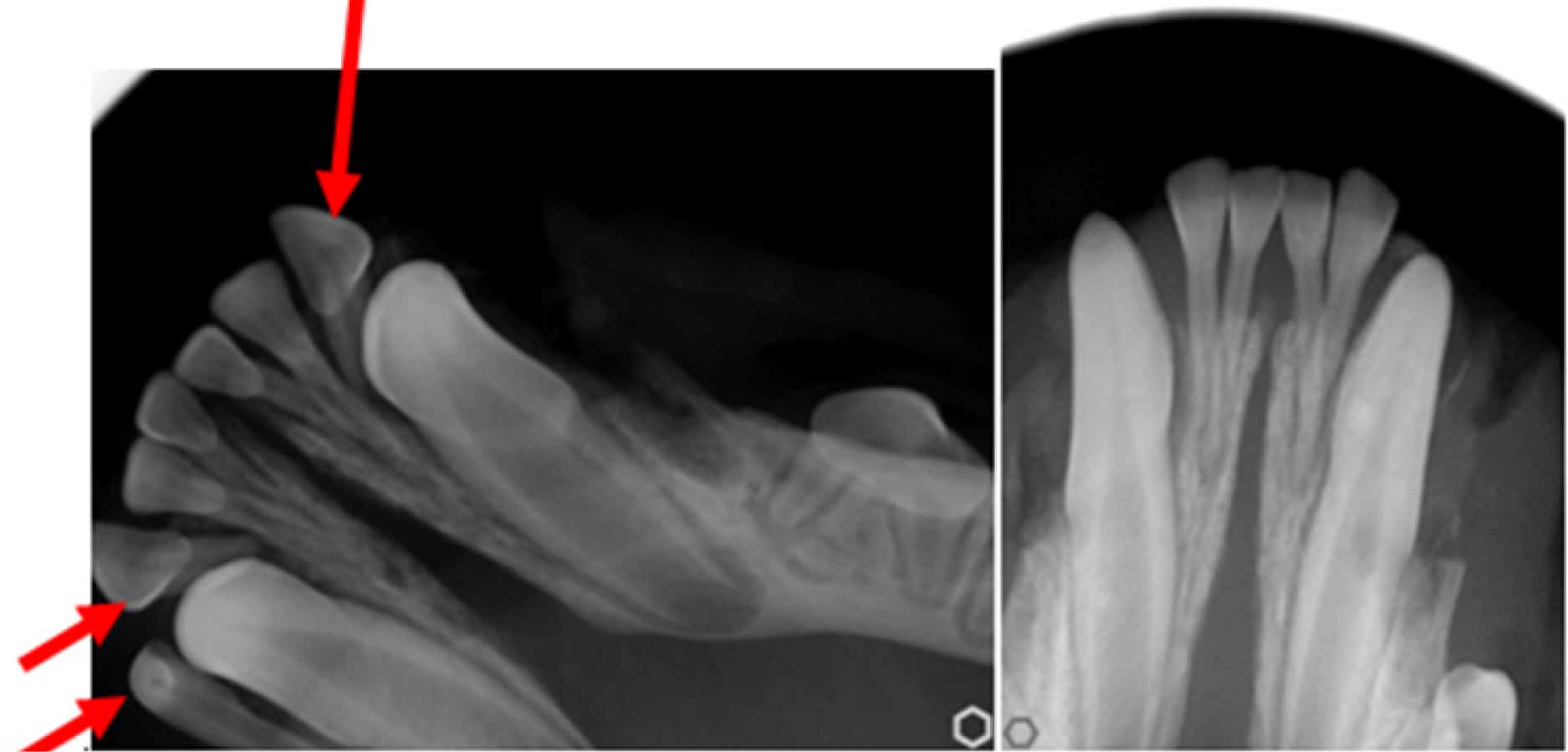
Operculectomy
Removing gingival tissue (or sometimes bone) that is above the impacted tooth, which could inhibit the tooth from erupting leading to cystic formation in the future if the tooth does not erupt.
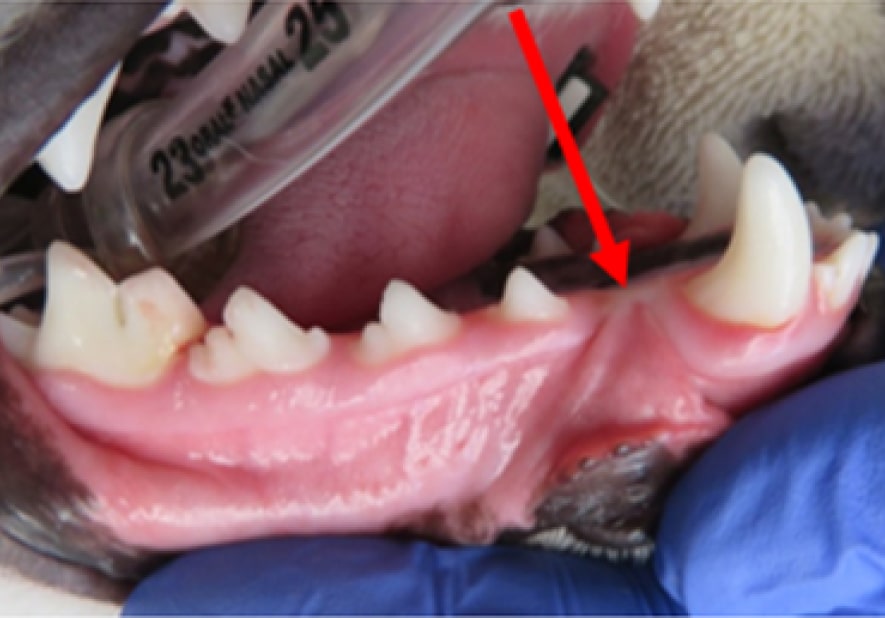
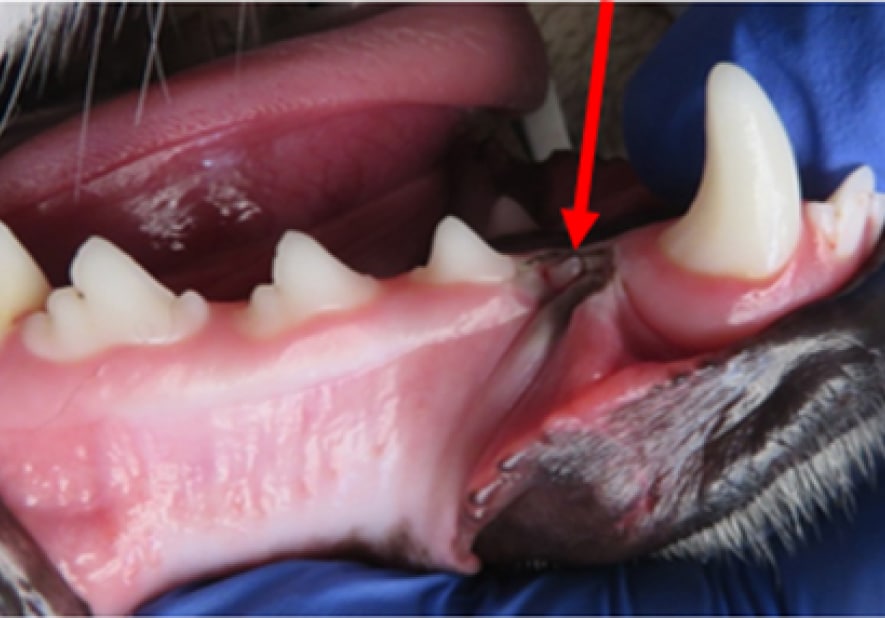
Causes of Malocclusions
Retained primary (deciduous) teeth
If a baby tooth fails to fall out, and is still present as the adult tooth erupts, a malocclusion will likely develop. This is probably the most common cause of malocclusions in dogs and cats.
- Primary teeth should shed before the permanent teeth erupt.
- The primary teeth cause abnormal crowding, forcing the permanent teeth into abnormal position. It is especially important to monitor permanent tooth eruption from age 4-7 months.
- “No two teeth should occupy the same space at the same time!”
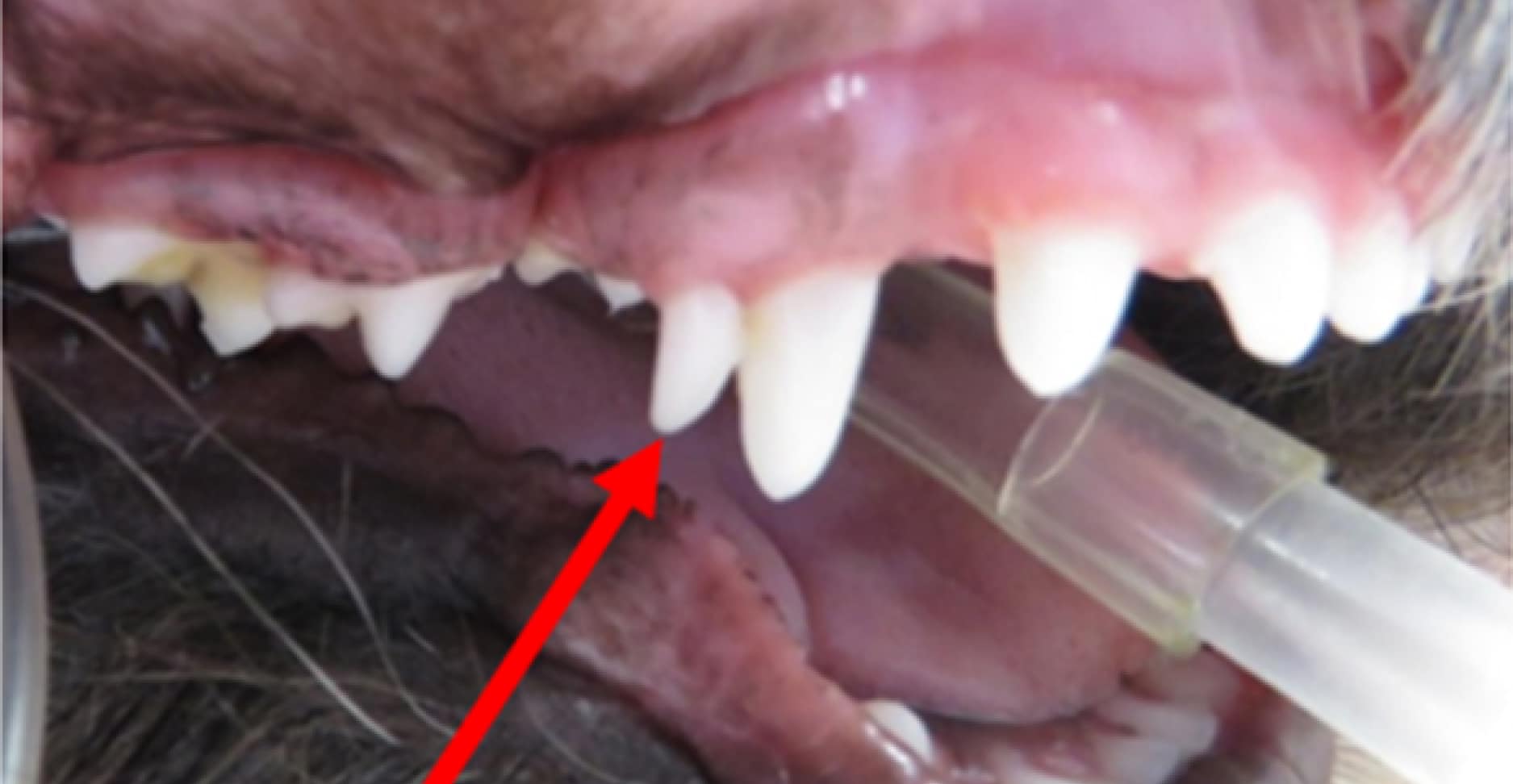
Genetics, Abnormal Growth
Typically result in class II or III malocclusion, where one jaw is shorter than the other jaw, most often due to a hereditary genetic trait.
- These dogs and cats should not be bred and the breeder should be informed of the problem so they can avoid breeding the parents of the dog or cat in the future.
Trauma
Occasionally, we see dogs or cats that had some form of head trauma when they were still growing. This can lead to a malocclusion if the jaw growth is misaligned, or if an individual tooth is damaged and erupts in a different position than normal.
Linguoverted or Base-Narrow Mandibular Canine teeth
The most common form of malocclusion in dogs is where the lower canine teeth are traumatizing the upper jaw.
- See orthodontic page for more information
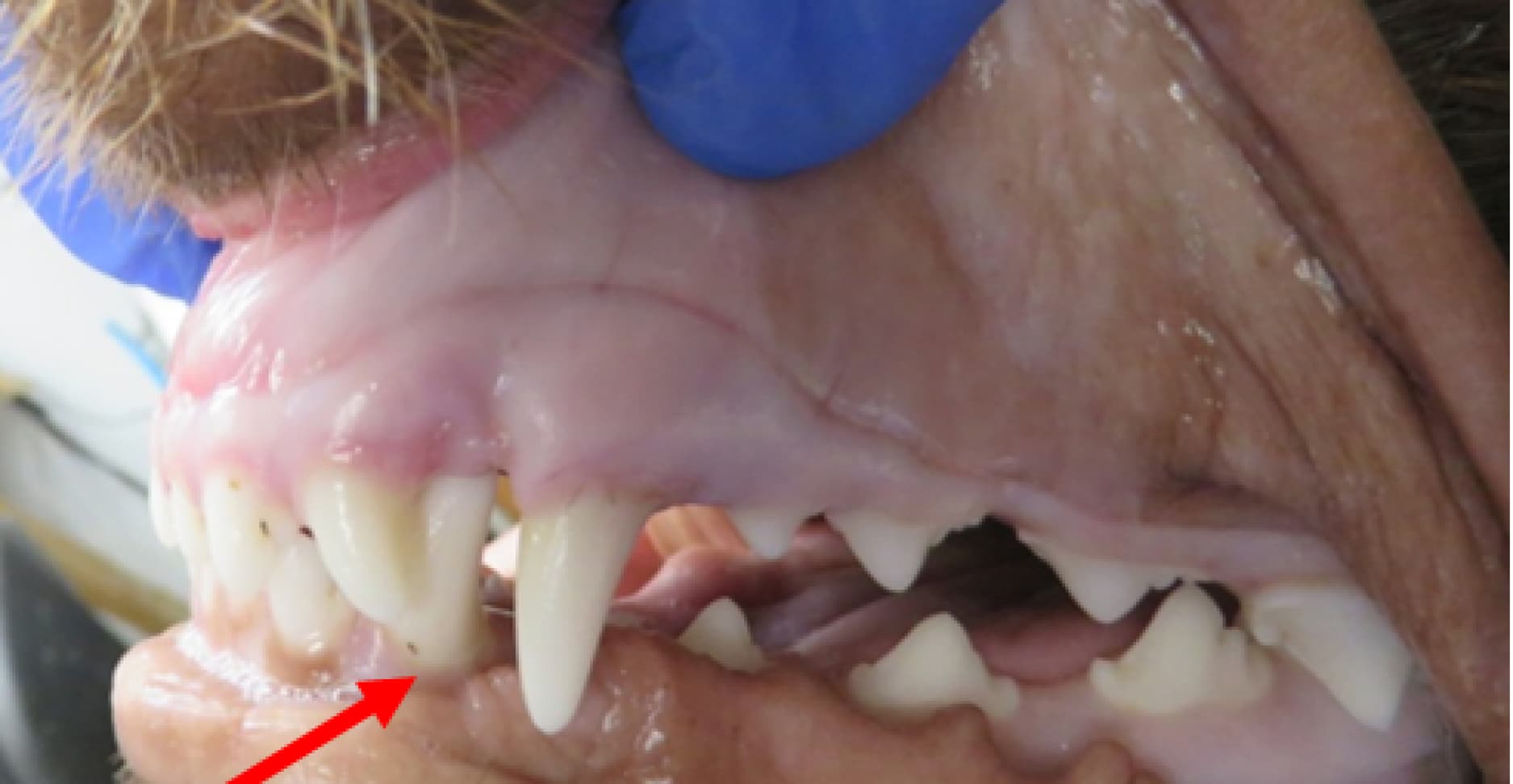
Mesioversion to maxillary (Lanced) canines
The maxillary (upper) canine teeth sometimes erupt horizontally, causing the tip of the crown to point forward rather than down. This is most commonly seen as a genetic defect in Shetland sheepdogs, Italian greyhounds, Fox terriers and miniature Schnauzers, though it can occur in any breed as a result of a persistent baby tooth.
- See orthodontic page for more information
**An important note about orthodontic correction. ** Movement of teeth is a procedure that requires proper materials and a degree of expertise in dentistry. Improperly applied orthodontic devices can cause more harm than benefit and permanently damage the teeth and gums. Orthodontic correction should never be undertaken without a thorough bite evaluation and an understanding of the type of tooth movement and appliance needed. In addition, it is unethical to show a dog after orthodontics has been performed to correct a genetic malocclusion. If you have any questions, please feel free to discuss these with us at your consultation.
Call (218) 461-4825 or book online to schedule your pet’s advanced dental appointment.
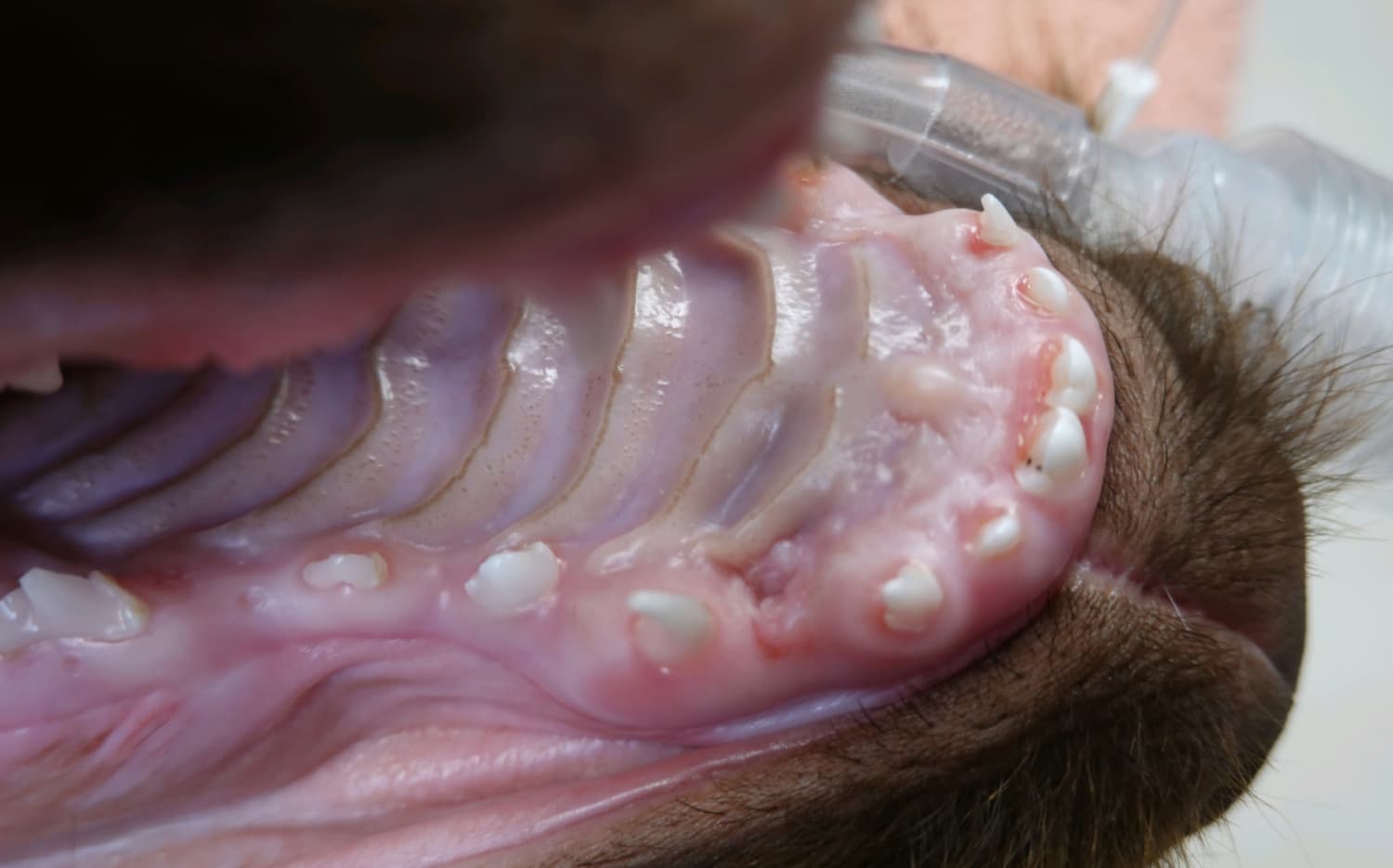
Frequently Asked Questions About Malocclusion
What breeds of dogs have malocclusions?
Flat-faced breeds (brachycephalics), such as boxer dogs, shih-tzus, Boston terriers, and lhasa apsos, have “abnormal” bites that are recognized as being “normal” for their breed, where the lower jaw protrudes in front of the upper jaw and alters the above tooth-to-tooth relationships.
Can malocclusions be hereditary?
Evidence gained from population studies, especially family and twin studies, have shown that genetic factors play an important role in the etiology of malocclusions.
How are lanced canines corrected in pets?
Lanced canines, or teeth that are misaligned in a way that prevents proper biting, can be corrected with orthodontic appliances. These devices are designed to reposition the teeth, improving the pet’s bite and overall dental function.
What is a normal scissor bite in pets?
A normal “scissor bite” occurs when the upper incisors overlap the lower incisors, and the lower canine teeth fit between the upper third incisor and upper canine without touching either. This alignment allows the upper and lower teeth to interlock properly, similar to the blades of scissors.
What is malocclusion in pets, and how is it treated with orthodontics?
Malocclusion refers to a misalignment of the jaw or teeth in pets, causing issues with how the upper and lower teeth fit together. Orthodontic treatments, such as the use of specialized appliances, are used to correct these misalignments, ensuring a more comfortable bite and preventing potential oral health problems.

